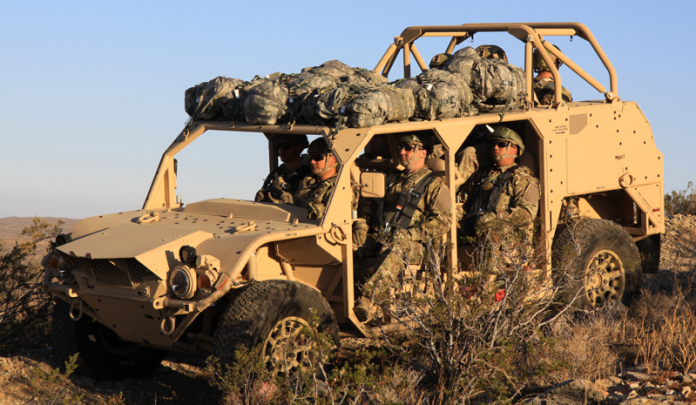
Light transport is utilised by friend and foe alike. Agility and utility combine, from transformed commercial vehicles to those designed for the military.
The military light tactical truck is the ‘do all’ vehicle filling a multitude of roles both in garrison and on the battlefield. Although armoured vehicles have gained much attention for many militaries the unprotected light truck continues to encompass the majority of their fleets. These 4×4 trucks move supplies, carry people, and provide a platform for a wide range of mission configurations. In fact, despite the recent emphasis on protected tactical vehicles especially by larger armies, there are a number of major initiatives underway, like the US Army Infantry Squad Vehicle, which will field large numbers of unprotected ‘soft skin’ light vehicles for combat use. Models in use range from those developed from ground-up for military use to commercial designs.
Commercial Adaptions
For many regular militaries and definitely for irregulars and insurgent armies the commercial light vehicle is a ready solution. These are easily available, relatively inexpensive and maintained at local facilities. The Toyota are not only used by Japan’s Self Defence Forces but its Land Cruiser and Hi-Lux pickups have also been the vehicle of choice for western Special Operations Forces (SOF), United Nations (UN) and insurgent forces. The Toyota pickup can carry fighters and, when converted with an improvised machine gun mount, provides a fire support vehicle, referred to as ‘technicals’. These vehicles are popular in Africa, South America, and the Middle East. The Land Cruiser model 79 is powered by either a 4.2-litre turbocharged 170hp diesel, a 4.5-litre diesel 202hp, or 4-litre 227hp petrol engine. It has good off-road capability although reportedly later models have less so.
The Land Rover, a subsidiary of India’s Tata Motors, continues to be a reliable multi-use light vehicle. The Land Rover Series and Defender models which use the 2.5l four-cylinder 300TDi engine (111hp, 83kW) have been a work horse for the United Kingdom and Commonwealth forces. The recently introduced Wolf is a beefed up design for the British Forces and Dutch Marines. It is available in 23 versions including long wheel-base, six wheel and armed models.
The Mercedes G-Wagon (Geländenwagen) is another commercial design that has been adapted for military use. In fact, it actually started as a military design that was translated into commercial versions. The armed forces of Denmark, Canada, Malaysia, the Netherlands, Sweden, Norway, Austria, Switzerland, Argentina and the United States have all used the G-model. Offered in a number of versions it has a payload capacity of between 500kg and 1,500kg depending on the model. It is so versatile that it has even been utilised as a prime mover for light artillery. In 2018 a new G-Class was introduced. Initially the G550 model will have a 4-litre V8 twin turbocharged petrol engine, developing 415hp and nine speed automatic transmission. It also has improved off-road and fording.
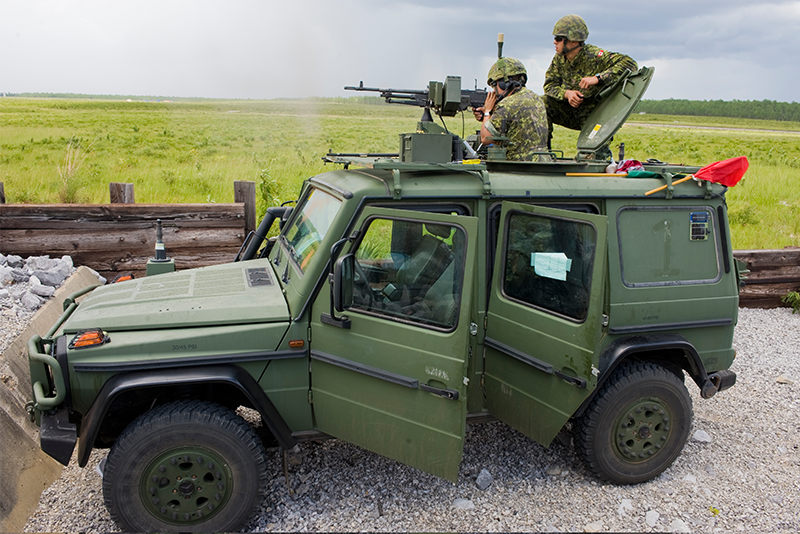
Another commercially derived military vehicle from Tata is the 4×4 Xenon pick-up which can carry up to 12 soldiers, as well as be fit for command or medical missions, or as a weapons mount. Available in single or double cab versions the latest XT have a 2.2l 140hp turbocharged diesel engine. Tata vehicles are well received within the region and were well represented in the hands of the Iraqi Army during its campaign against Daesh.
A distinct advantage in utilising essentially off-the-manufacturing line vehicles is their significantly lower acquisition cost as well as their commercial available parts and service facilities reducing support costs. However, military operations can theoretically result in their shorter life requiring earlier replacement. This has a potential upside in that it provides for the regular replacement of the oldest vehicles which will have increasing maintenance demands.
Purpose Built Military Designs
Many militaries have clear ideas on what capabilities are required in a light tactical vehicle based on years of field experience and prefer vehicles that are designed to reflect these demands. A number of firms in the automotive industry have established reputations for developing purpose built designs that have successfully addressed these needs. One of these is the Light Multirole Vehicle (LMV) from IVECO Defence.
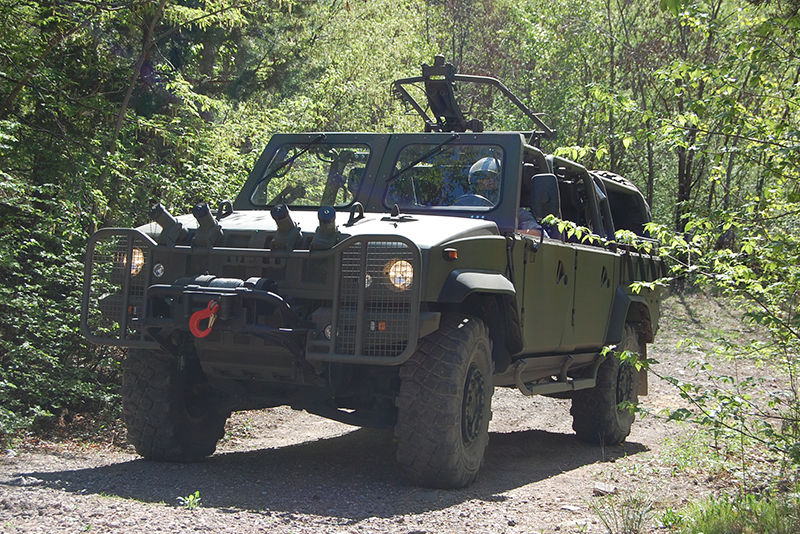
The LMV, an IVECO spokesperson shared, “was intended from inception to be a design that would evolve by incorporating incremental improvements from lessons learned in the field”. The current LMV is in its fourth generation with improvements including a new 220hp engine, gearbox, electronic stability controls, 40 percent increase in payload to 1,500kg, better crew ergonomics and enhanced comfort and safety. The LMV is an ideal platform for a range of tasks with both short and long wheel base versions. It has been selected by over fourteen militaries including Indonesia and Brazil. The later awarded a contract in 2016 with a requirement for over 1,464 vehicles.
Some light tactical vehicles like the French ACMAT light trucks have a reputation in their own right. ACMAT is now part of Arquus Defence, formally Renault Trucks Defence. Its latest versions, the Light Attack Vehicle and VLRA (Liaison, Reconnaissance and Support Vehicle) incorporate much from its predecessor, the VLA, proven by the French Foreign Legion. Using a baseline platform these are offered in some 80 different models which are optimised for harsh operating environments. Targeted to Asian and African markets they stress simplicity reliability and ruggedness.
Arguus Defence’s latest development is the Sherpa 4×4 all terrain attack vehicle. It incorporates many of the latest automotive features including disc brakes, power steering, a 310 amp alternator option, central tire inflation, and a 265hp Euro 3/5 compliant engine. It is optimised for military missions with high ground clearance, angles of approach and exit and a one meter water fording. The French DGA began taking delivery of Sherpas in 2018 for use by SOF, and it is also in service in eight other countries including Mexico, Indonesia, India, Chile, Egypt and Brazil.
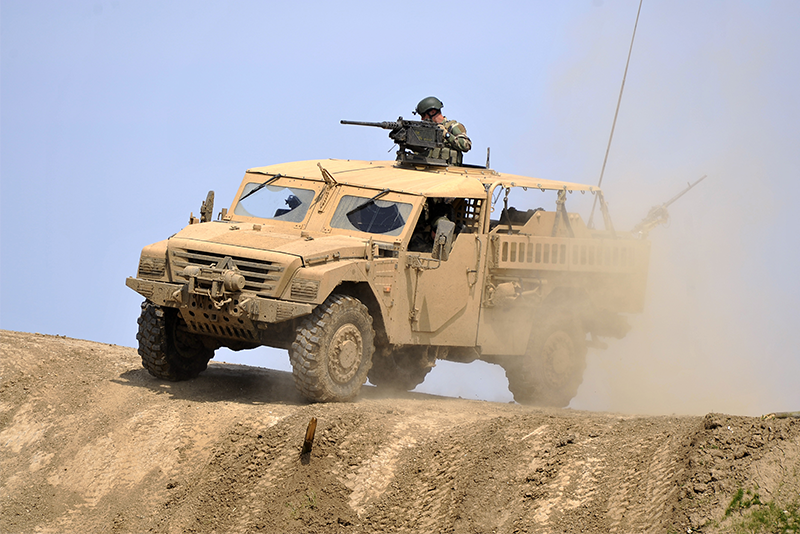
The AM General High Mobility Multi-purpose Wheeled Vehicle (HMMWV) remains the most widely used light utility vehicle in the world. Since introduced in 1981 it has undergone a number of improvements and upgrades. Despite the fielding of the Joint Light Tactical Vehicle (JLTV) by the US Army, it is evident that HMMWV will not only continue to serve but that newer versions will be acquired and fielded. The company demonstrated in it NXT360 what has been done to provide more power, increased payload, better ride and handling and enhanced survivability. The NXT360’s upgraded suspension accommodates 7,100kg (15,500lb) gross vehicle weight, while a new electronically controlled 250hp V6 Turbo engine, six speed automatic transmission and cooling improvements assure performance. An AM General release announced that the company has now received two orders from the Army for modernised HMMWV’s with delivery to begin in late 2019.
A stalwart in military tactical trucks throughout the Asian-Pacific are those from Kia in Korea. The company’s KM450 4×4 utility trucks that resemble the US designs of the 1960s and 70s like the M37 are common to many armies. However, in 2016 Kia introduced its own design the Kia Light Tactical Vehicle (KLTV). With a payload of up to 2,000kg, a 3.0l 225hp diesel engine, and eight speed automatic transmission it represents a new design emphasising mobility, reliability, and survivability. Offered with standard or long wheel base it can accept modules to undertake various missions. The design draws on commercial technologies and allows use of existing service facilities if desired. Currently in use by the Republic of Korea there is reported high interest by Pakistan while the Philippine Army is also conducting trials.
All-Terrain Vehicles
A number of militaries have looked to commercial All-Terrain Vehicles (ATVs) to fill the light truck role for forward units. In many ways they have assumed the role as a relatively inexpensive ‘do all’ platform for general tasks especially in light units. As Jed Leonard vice president of Government and Defence at Polaris Industries stated, “The ATV’s proven ability to operate in severe environments particularly off-road make it an ideal candidate for providing soldier mobility and logistic transport for the small unit. Our MRZR, for example, has been configured for rapid personnel deployment, causality evacuation, and supply transport while also having the benefit of being carried inside or under military helicopters.”
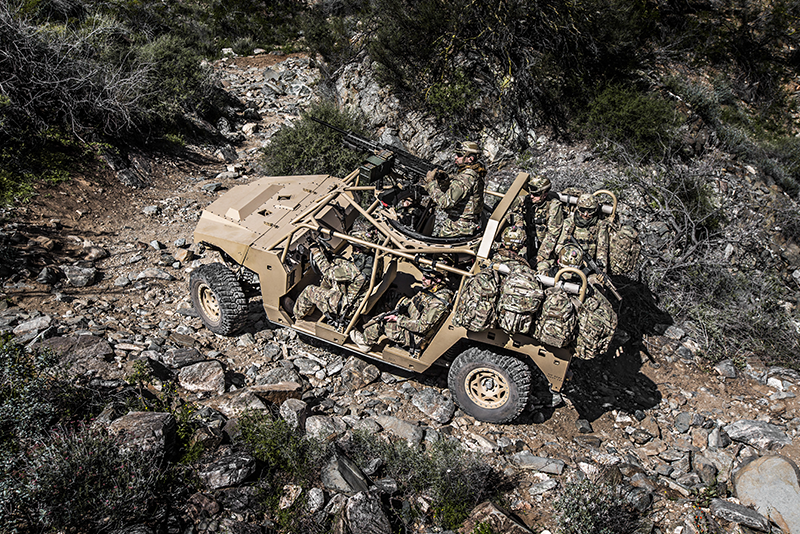
The 4×4 ‘two-up’ Quad carrying two to four persons plus a cargo area have been shown to be well suited to these tasks. The Polaris MRZR has a payload of 680kg (1,500lbs) and has been adopted by the US Army, Marines, and SOF in essentially the same form as used by civilian operators. Singapore’s Army has also adopted an ATV designed by ST Engineering Land Systems which is used for reconnaissance, as a weapon platform and general utility purposes.
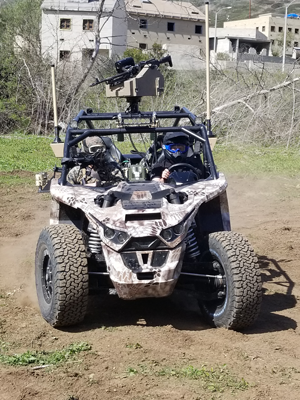
The use of all electric powered light vehicles has distinct advantages for military applications. The Reckless all-electric drive vehicle privately developed by the small US firm Nikola. It uses an efficient direct electric drive with four redundant independent motors. The design is reliable, low maintenance, and so power efficient that is able to export power. Even as a four seater with a 907kg (2,000lb) payload it is compact and light enough to be carried in or by all military transport helicopters including the MH-22 Osprey. In addition the electric drive is highly efficient, very responsive and quiet. Vice president Andy Christian stated that the vehicle has been demonstrated to US Marines and SOCOM who have shown interest.
Light Trucks for Combat
The US Army is seeking a way to make its light infantry, especially troops delivered by parachute and air landed, more flexible on the battlefield in that greater mobility will allow them to land further from an objective and then move quickly to it. To accomplish this they have released a requirement for an ultra-light vehicle capable of being transported by aircraft or helicopter. This Infantry Squad Vehicle must carry a squad of nine soldiers and their personal equipment which will result in a 3,629 kg (8,000lb) class loaded vehicle. It also must operate on roads at 88.5km/h (55mph) and move cross country.
A number of candidates have been previously presented to the Army. These include adaptions of light vehicles already used by other military organisations including SOF. These include the Polaris Dagor A1 which uses a turbo diesel/JP58 engine. Dagor is also already in use by the Canadian Forces. Polaris has focused on adapting its well established commercial All-Terrain Vehicle (ATV) line to the specific demands of military operations.
Another candidate is a variant of the General Dynamics Ordnance and Tactical System (GD-OTS) Flyer. The Flyer is fielded in two versions, 1.5m and 1.8m wide. The former can be transported inside the Boeing V-22 and Sikorsky CH-53 helicopters while both versions can be sling loaded externally and moved in military transport aircraft. They can carry a payload nearly equal to its curb weight; 1,864kg (4100lb) and 2,585 (5,700 lb). The Flyer is already in use by both US and Italian militaries including as an interim vehicle for the US Army ISV. These initial vehicles are being used to equip the five Airborne Brigade Combat Teams (IBCTs).
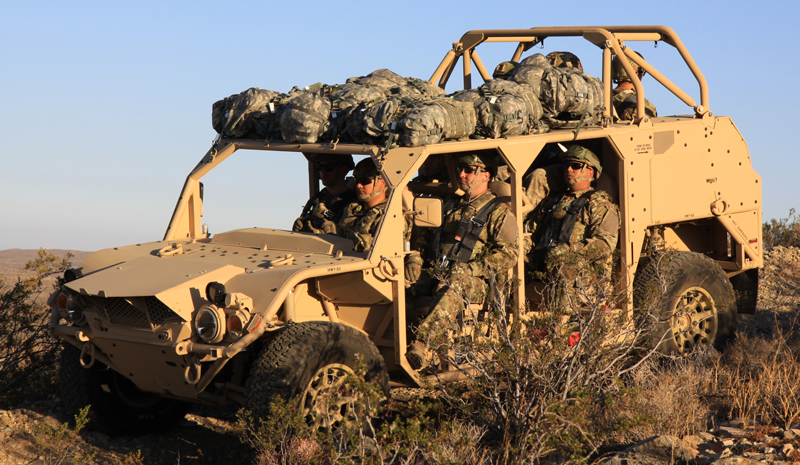
The plan for the ISV was to release and Request for Proposal on April 18, 2019 from which three competitors will delivery vehicles for evaluation. A single contractor will then be selected by the end of March 2020 to deliver 651 ISVs over five years. A potential of 2,065 vehicles could be required.












